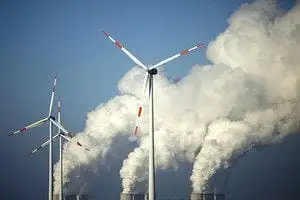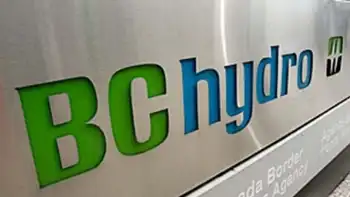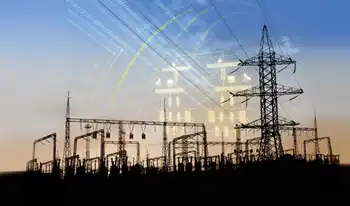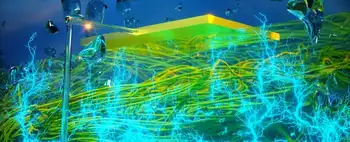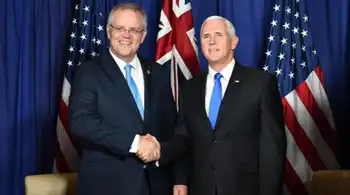Philips says, “Let there be LED”
By Reuters
Substation Relay Protection Training
Our customized live online or in‑person group training can be delivered to your staff at your location.

- Live Online
- 12 hours Instructor-led
- Group Training Available
The producer of one in four of the world's lights, which sold its semiconductor business in 2006 after it was undercut by Asian rivals, has invested more than 4 billion euros (US $5.47 billion) to ride the clean-tech wave and defend its world-leading position.
But this time, Philips is better prepared for competition.
The company is betting on a shift in the lighting market, away from inefficient incandescent light bulbs and toward light-emitting diodes or LEDs — perhaps best known for their use in the flashing indicators found on most consumer devices.
"In terms of value around 2015, LED will be bigger than conventional light sources," said Philips executive Niels Haverkorn. In the fourth quarter of 2009, LED-based products made up more than 10 percent of Philips' lighting sales for the first time.
Made of diodes, or chips, the first practical LED was a red light developed in 1962. Now the technology has advanced to enable them to produce light colors across the color spectrum.
To help draw attention to LEDs' potential to scale up, come down in price and reduce carbon dioxide emissions, Philips at the turn of the year converted the famous numerals on the Times Square Ball — which is raised and lowered to signify the coming of a new year — to LED technology.
Other stunts have included a display of LED lights at the world heritage-listed windmills at Kinderdijk in the Netherlands and a solar-powered LED streetlamp at the Copenhagen climate talks.
LEDs' advantages include long life, energy efficiency and the fact they do not contain mercury, as opposed to compact fluorescent lamps (CFLs), which after they became commercial in the 1980s were the first alternative to conventional bulbs.
Philips estimates LEDs made up just 6-8 percent of the 45-50 billion euros in global lighting sales in 2009. The company, which had about 6.5 billion euros in annual lighting sales in 2009, expects the global lighting market to grow to more than 80 billion euros by 2015.
To some extent, it is banking on regulation. The European Union — which is phasing out old-style incandescent bulbs ahead of a total ban in 2012 — sees LEDs as a crucial step in reducing carbon dioxide emissions, because they use up to 80 percent less energy and last much longer.
About 16 billion conventional light bulb fixtures globally have to be replaced in the coming decades with LED lights. Researchers at consultancy iSuppli expect the LED market to continue to grow despite the economic crisis, estimating that in 2013 sales from LEDs globally will be around $15 billion.
Although lighting is seen as a crucial driver of Philips' future earnings growth, analysts see it as more of a long-term rather than short-term support for Philips' stock.
"The lighting market is set to shift both in terms of light source and applications. Philips is trying to ride this curve and, in our view, has all the right ingredients in place if the industry were indeed to move in this direction," said Jan Hein de Vroe, technology analyst at ING, who has a "buy" recommendation on the stock.
Of 37 analysts tracking Philips shares, 19 have a "strong buy" or "buy" rating, while 14 have a "hold" and 4 a "sell" or "strong sell" recommendation, according to StarMine data.
Analysts also warn competition in the market will be brutal. Philips' main rivals in the sector are Siemens' Osram, General Electric, Sharp, Samsung, and Cree of the United States.
Anticipating this — and building on lessons it learnt from sliding semiconductor prices — the 119-year old company is scaling up its LED output. Where before it used to sell just light bulbs, in LEDs the offer is a packaged "solution," such as a luminaire, or the lamp and fitting combined.
"The manufacturing technique is quite similar to that seen in semiconductor manufacturing, where foundries compete mainly on price," said De Vroe. "In that sense we think it is wise on the part of Philips to move their focus toward 'solutions'."
Philips sold a majority in its semiconductors business to a private equity consortium in 2006, retaining a minority interest in the company, renamed NXP. But it remains committed to lighting: in the business since 1891, it's a veteran of illumination.
But even if the company has a savvier strategy in approaching the modern LED market, the challenges it faces include current high prices which are deterring some retailers from stocking the products.
The quality of LED that can deliver a light that feels "warm" — a type that only large companies like Philips are currently able to produce — is very expensive.
It now costs about $46 to deliver 1,000 lumens — a measure of the power of light — or units of "warm" light, compared with $25 for the "cold" light variety.
By 2015, the cost of "warm" LED lights is expected to slide to $4 per 1,000 lumens versus $2 for "cold" lights, according to estimates from the U.S. Department of Energy. To produce incandescent globes, it said, currently costs $0.29 per 1,000 lumens.
It expects the cost of producing LEDs to fall below that of compact fluorescent lamps in about 2013, but still be more expensive than an incandescent bulb.
Business users are enthusiastic, said Yvan Dejaeghere, director at wholesaler Technische Unie, a subsidiary of French electronics equipment distributor Sonepar.
"In our business-to-business professional segment we are seeing huge demand for new applications and new fixtures," Dejaeghere said. The cost of replacing one conventional globe with an LED could be earned back within two years, he said.
LEDs are most frequently being used to replace conventional bulbs in restaurants and hotel lobbies, where they can take on a decorative effect due to their ability to change colors. Factories have yet to switch due to the high cost.
Philips' business clients include the Marriott hotel chain and Heineken, which uses LED lighting in its Amsterdam brewery shop. Vodafone is also a client, while supermarkets Sainsbury and Tesco use LEDs in their refrigeration displays.
For consumers, it's not so simple. The array of choices in lighting outlets can be dazzling: LEDs, conventional bulbs, fluorescent tubes or halogen lights?
Ralf Buehler, vice president for Europe and Middle East and Africa at LED lighting specialist Cree, said it may still take a while before LEDs will be available to all customers.
"We are five to six years away from a situation where you would go to one of the large do-it-yourself stores where they have lots and lots of these products at a commercially viable price in stock," he said.
Gert Spaargaren, a professor in the Environmental Policy Group at Wageningen University in the Netherlands, said lighting retailers are proving slow to embrace the new technology.
"What is needed is that retailers... embrace the new products, integrate them into their mainstream assortment," he said. "Consumers show a really high willingness to go along with sustainable alternatives if they are offered in an appropriate way by appropriate providers."






